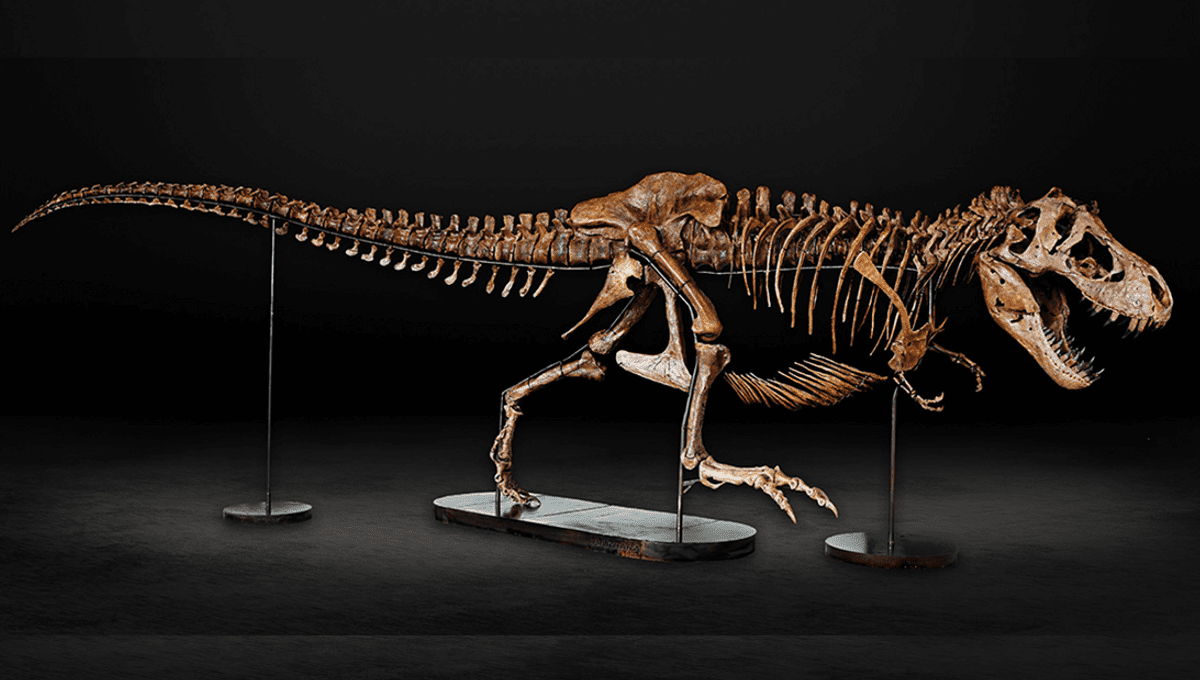
This stunningly preserved fossilized skeleton is “Barbara”, a new Tyrannosaurus rex specimen about to go on display at Auckland Museum in New Zealand. The palaeontologists analyzing the 66-million-year-old remains made a discovery that makes this T. rex especially rare – when she died, Barbara was probably pregnant.
Computed tomography scanning of one of the recovered bones showed the presence of medullary bone tissue. This type of tissue growth is also seen in birds when they are preparing to lay eggs, and serves as a reservoir of calcium that is needed to produce hard eggshells.
Being one of only three pregnant T. rex fossils ever discovered is a pretty big deal in itself, but that was not the only interesting thing about Barbara. The scientists also found evidence that she had suffered a serious metatarsal injury to her left foot, which – for an animal that walked on two legs and relied on catching prey for its food – could have spelled catastrophe. In fact, the researchers describe it as “probably… the worst injury that a massive bipedal animal could suffer.”
“This is the common injury that footballers get – you might remember all the fuss around David Beckham’s metatarsal injury back in the 2002 World Cup!” Dr John Nudds of the University of Manchester, one of the authors of the scientific report, told IFLScience.
The extreme pain that an injury such as this would cause would likely spell the end of a T. rex’s hunting career, at least for some time.
“Barbara shows a particularly bad break, which goes right through the site of the tendon attachment, so most probably the tendon would have been torn off the bone,” said Dr Nudds. “This would have been excruciatingly painful and Barbara would have had a severe limp after this injury.”
Against all odds, however, it seems that Barbara managed to push on through the pain.
“The metatarsal break shows clear signs of healing, and so she clearly survived this injury and was fit enough to be able to mate – as is evidenced by the medullary bone showing she was in an egg-laying phase when she died,” concluded Dr Nudds.
The question, then, is how did she manage to survive for so long?
The answer could be that other members of the pack stepped in to help out. There have been some suggestions that, in contrast to our image of these animals as cold-blooded killers, dinosaurs may have looked after injured members of the herd by sharing their own kills. There isn’t yet enough evidence to know for sure, but this could be part of the explanation for Barbara’s survival. It is also likely that she was able to move around enough to scavenge for scraps of food.
Barbara will be joining Peter, another T. rex at the Auckland Museum, marking the first ever time that a male and female pair of these dinosaurs have been displayed together.
“This is an incredible coup for Auckland Museum and all New Zealanders, to have a unique opportunity to see a male and female T. rex in the same space, at the same time. This dramatic display will be the envy of every museum around the world, ” the museum’s Chief Executive Dr David Gaimster told Concrete Playground.
You can read more about Barbara in the scientific report released by Auckland Museum.
Source Link: Meet Barbara, The Pregnant T. Rex With A Football Injury